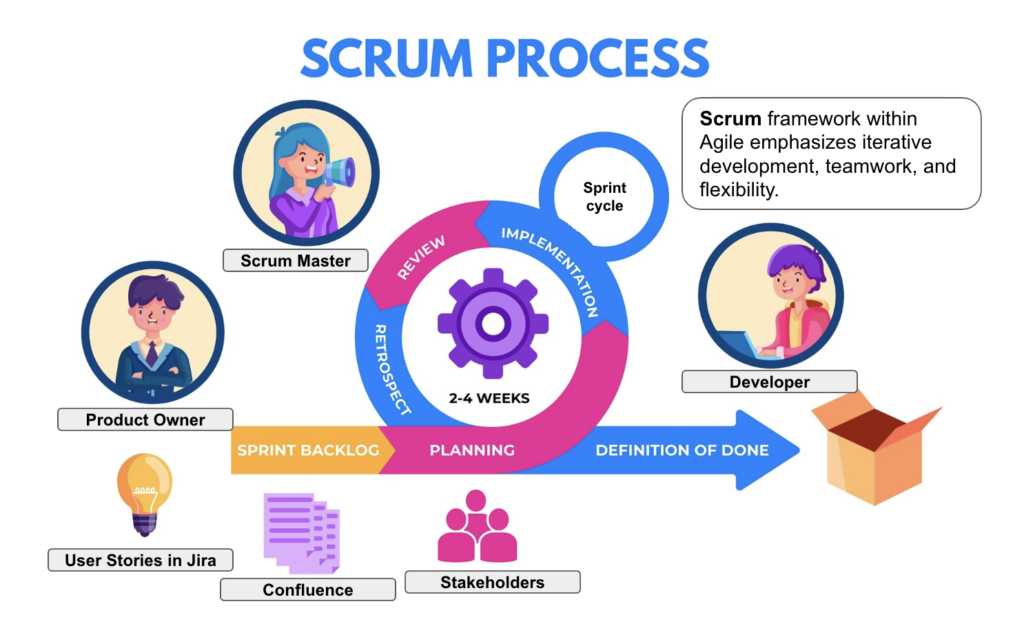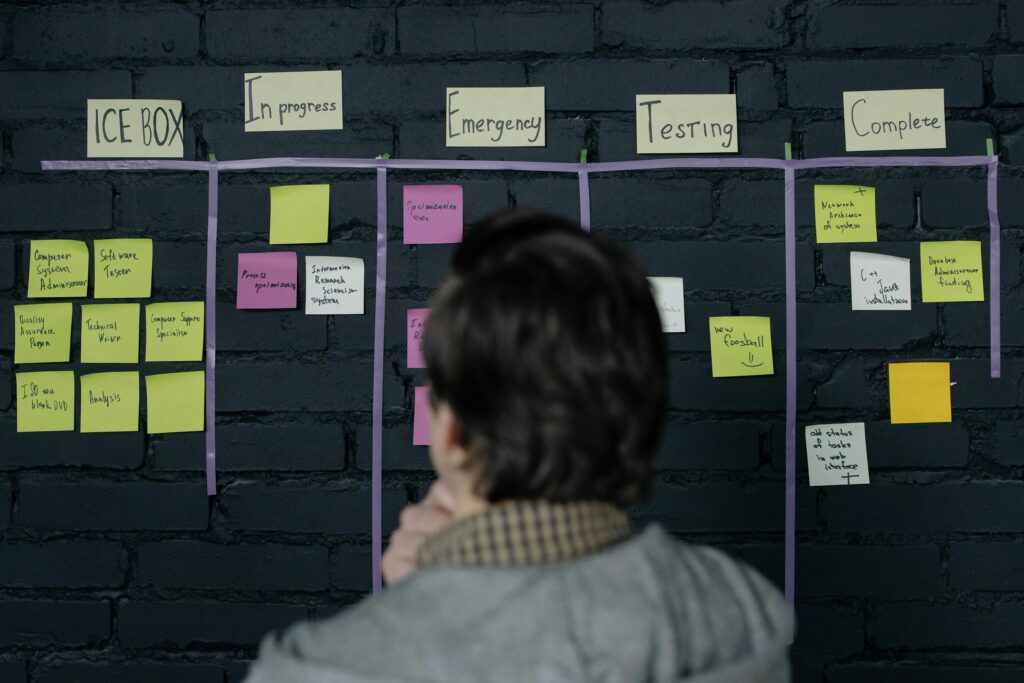In product management, methodologies like Agile and Waterfall play a pivotal role in shaping product development and delivery. Each approach offers unique advantages depending on your product’s needs, team structure, and market dynamics.
This article explores which methodology best fits your product management needs.
Agile vs. Waterfall in Product Management: A Comparison
| Aspect | Waterfall | Agile |
|---|---|---|
| Planning and Requirements | Requirements are gathered upfront and documented in detail. Example: A healthcare software product requiring extensive compliance documentation. | Requirements evolve throughout development. Example: A SaaS product that needs regular updates based on user behavior. |
| Stakeholder Communication | Stakeholders are involved primarily at the beginning and end of the project. Product Manager’s Role: Liaison to ensure timelines and deliverables are understood. | Stakeholders are involved regularly with feedback loops. Product Manager’s Role: Facilitate sprint reviews and align feedback with priorities. |
| Product Roadmap | Linear and milestone-driven roadmap. Use Case: Projects with fixed release dates and strict feature requirements. | Dynamic roadmap with shifting priorities based on market demands. Use Case: Products in fast-changing industries like FinTech or eCommerce. |
| Risk Management | Risks are harder to address as issues are often discovered late. Mitigation: Heavy upfront planning and documentation. | Risks are addressed incrementally in each sprint. Mitigation: Continuous feedback and iterative testing. |
| Delivering Customer Value | Customer sees the final product only after development is complete. Challenge: Late feedback may require costly changes. | Usable features are delivered incrementally after each sprint. Advantage: Aligns closely with customer expectations. |

How Agile shapes iterative Product Development
Agile is built for flexibility, adaptability, and continuous delivery. It empowers product managers to adjust priorities based on user feedback and evolving market needs, ensuring the product remains relevant and valuable.
Key Benefits for Product Managers:
- Dynamic roadmaps – Agile roadmaps evolve as priorities shift, ensuring the team focuses on what matters most at any given time.
- Frequent feedback loops – Iterative releases enable stakeholders and users to provide input regularly, improving alignment and product-market fit.
- Early value delivery – Features are delivered incrementally, allowing users to benefit from the product even before full development is complete.
When to use Agile in Product Management:
- Dynamic environments
Industries like SaaS, FinTech, or eCommerce where requirements frequently change. - Customer-centric products
When user feedback plays a critical role in shaping product features. - Fast time-to-market
Agile allows for rapid iteration and deployment.

How Waterfall supports stable Product Planning
Waterfall offers a structured, linear approach ideal for projects with fixed goals and requirements. It provides predictability and ensures all aspects of the product are thoroughly planned before development begins.
Key Benefits for Product Managers:
- Clear milestones – Each phase is well-defined, making it easy to track progress against specific goals.
- Comprehensive documentation – Extensive documentation ensures clarity for teams and stakeholders, particularly in highly regulated industries.
- Stable roadmaps – Fixed timelines and budgets reduce uncertainty, providing confidence to stakeholders.
When to use Waterfall in Product Management:
- Well-defined requirements
Projects where goals and deliverables are unlikely to change. - Regulated industries
Compliance-heavy sectors like healthcare or aviation. - Predictable timelines
When deadlines and budgets are rigid.
Which Methodology Is Right for Your Product?
The choice between Agile and Waterfall depends on your product’s unique requirements:
| Scenario | Recommended Methodology |
|---|---|
| The product’s features or goals are unclear and likely to evolve during development. | Agile |
| The project involves multiple stakeholders with conflicting priorities that need continuous alignment. | Agile |
| The product must integrate with existing systems requiring extensive upfront planning and design. | Waterfall |
| The team is small, cross-functional, and requires a flexible approach to meet shifting demands. | Agile |
| The product must launch by a fixed deadline, regardless of changes in requirements. | Waterfall |
| The development process involves constant experimentation and testing to discover what works best. | Agile |
| Detailed documentation and approvals are mandatory before starting development phases. | Waterfall |
| The product will be delivered as a single, fully completed version with no interim releases. | Waterfall |
| Rapid market changes demand frequent updates to stay competitive. | Agile |
| Stakeholders expect a highly predictable timeline and budget for the entire project. | Waterfall |
By understanding how each methodology impacts product planning, stakeholder communication, and delivery, you can choose the approach that aligns best with your goals.
Subscribe to our newsletter for more actionable insights into product management strategies and tools.







